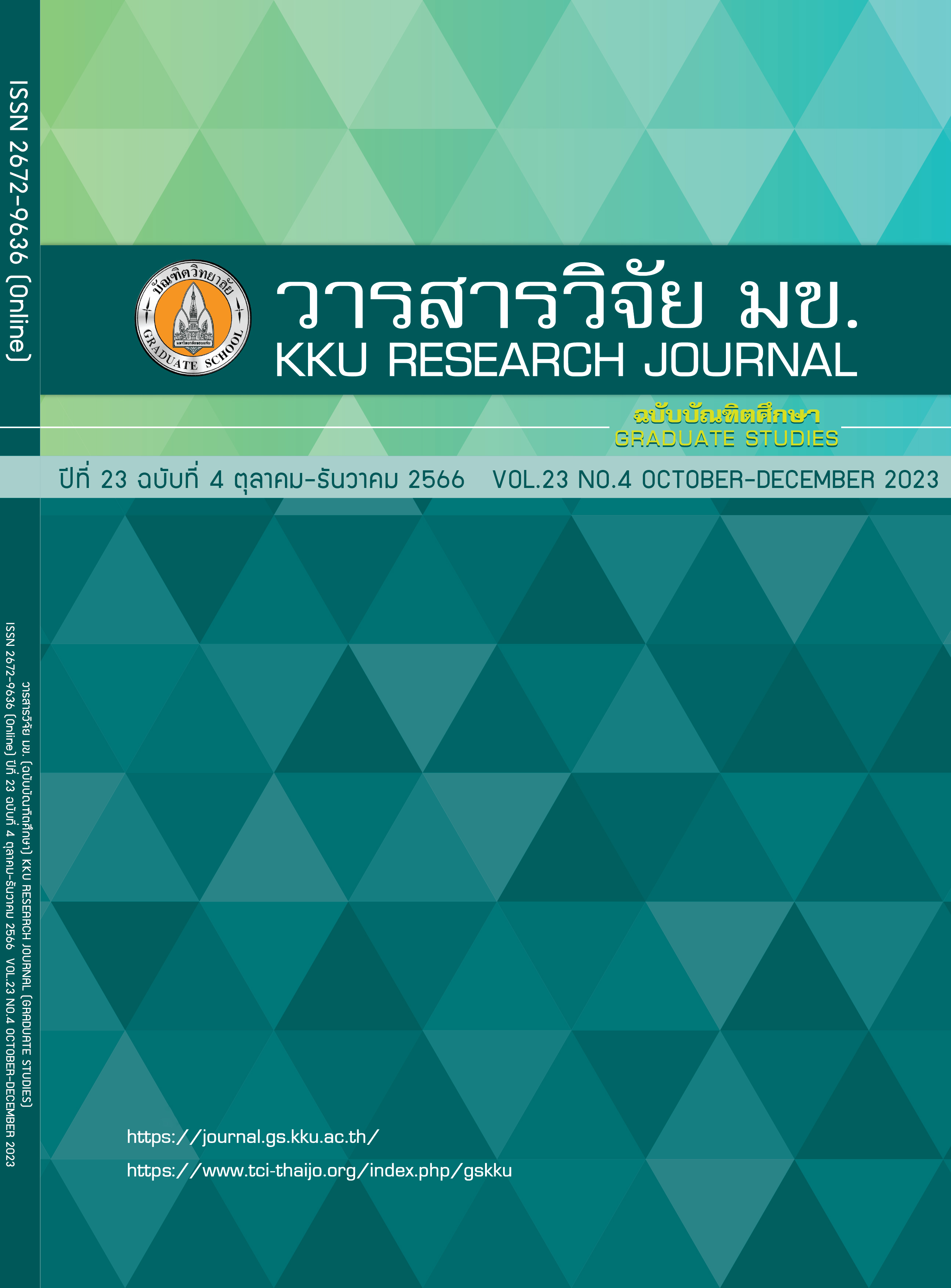Comparison of Light Intensity with Area Measurement VS. Illuminance Standard of Foreign Countries: Case Study at Workplaces in Lao People's Democratic Republic
Keywords:
light intensity, illuminance standard of foreign countries, workplaceAbstract
This study was a comparison of light intensity with area measurement in universities, hospitals, and industry, a case study in Vientiane Capital, Lao People's Democratic Republic (Lao PDR) using a Digital Lux Meter model LX-71 that has been calibrated (Calibration) with a certificated document. Before starting every measurement, the photometer zeroing was adjusted. This measurement was an area measurement of the averaged illumination intensity. There are 353 study areas in total compared to the illumination intensity standard of the Ministry of Labor, Thailand, 2018. This shown that there are 34.84% of compliance with the standard and 65.16% of non-compliance with the standard. Compared the averaged illumination intensity with the standard IES.1981.1983 of the United States, 34.56 % of the number of areas that passed the limit, and 65.44% of the number of areas that non-pass the limit were revealed. While compared the averaged light intensity to the European Union's EN 12464-1:2002 standard, 30.31% of the number of areas that was compliant with the standard and 69.69% of the number of areas that was non-compliant with the standard were found. Therefore, these light intensity results with area measurement were still a lot of working areas with insufficient light intensity for the staffs in universities, hospitals, and industry. When comparing the results with 3 illuminance standards of foreign countries, it was found that the standard of the Ministry of Labor, Thailand, 2018 and the IES standard, the United States had a much higher percentage of compliant light intensity with these limits than the EN 12464-1:2002 standard. Therefore, this research can also be used to support information for making decision on setting the appropriate light intensity standard in Lao PDR and be the starting point for the application and development of light intensity standard in Lao PDR, by considering the selection of the standard of light intensity that has been accepted from abroad, which considers the health, safety and work efficiency of employees, as well as the considerations of economic feasibility and measurement methods for implementation and enforcement in enterprises. This affect to allocate the budget appropriately and to save investment cost as well as reduce unnecessary energy use.
References
Ministry of Labour and Social Welfare Lao People's Democratic Republic. labor law 2013. [Internet]. 2020 [cited 2020 August 17]. Available from: https://www.ilo.org/dyn/natlex/docs/ ELECTRONIC/96369/120649/F-1698631239/LAO96369%20Lao.pdf.
Division of Occupational and Environmental Diseases, Department of Disease Control, Ministry of Public Health. Work light assessment 2018. [Internet]. 2020 [cited 2020 August 3]. Available from: http://envocc.ddc.moph.go.th/uploads/Menu/rayong/light.pdf.
Phot P, Pongsit B. Lighting Assessment in Workplaces during Day and Night Shift at a Motorcycle Part Manufacturer in Chonburi Province. KKU Journal for Public Health Research. 2018; 11(1), 78-85. Thai.
Chanyakan K, Nipawan S, Kittiya F, Konthanan U, Narudee P, Nichapha M, te al. Factors affect to lighting intensity case study of the pottery mill in Dhankwan Municipal, Chokchai sub-district, Nakhonratchasrima Province. Nakhonratchasima College J. 2019; 9(1): 124. Thai.
Hobstetter D. Daylighting and productivity: A study of the effects of the indoor environment on human function 2007. [Internet]. 2020 [cited 2020 Sep 13], Available from http://www.thespaceplace. net/articles/hobstetter200703.php.
Department of Labor Protection and Welfare. Announcement of the Department of Labor Protection and Welfare Re: Standard of Light Intensity 2018. [Internet]. 2020 [cited 2020 August 3]. Available from: http://library.rsu.ac.th/greenoffice/law/law4_2.pdf.
American Society of Engineering and Lighting. American Standard Establishment lighting benchmarks are set by the Engineering and Lighting Association of the United States (Illuminating Engineering Society: IES). [Internet]. 2020 [cited 2020 Sep 10]. Available from: https://www.ies.org.
European Committee for Standardization 2011. Light and lighting-Lighting of work places Part 1: Indoor work places. [Internet]. 2020 [cited 2020 Sept 10]. Available from: https://www.scribd.com /document/459783774/ EN-12464-1.
Punpaphatpron B, Sukon K, Sitthipan C. Measurement of Work Environment Hazards of the Employees Working for A Garment Dyeing Factory in Samut Sakhon Province. Apheit J. 2019; 8(1): 18-33. Thai.
Panuwat J, Ganjana N, Fuengfa K. Quantity of Illumination in the Classroom of School Under the Supervision of Khon Kaen Municipality. KKU Research J. 2002; 2(1): 37-45. Thai.
Leccese F, Montagnani C, Iaia S, Rocca M, Salvadori G. Quality of lighting in hospital environments: a wide survey through in situ measurements. Journal of light & visual environment. 2017 Mar 10;40:52-65.
Ministry of Planning and Investment. Lao Statistics Bureau 2021. [Internet]. 2022 [cited 2022 December 12]. Available from: https://laosis.lsb.gov.la/board/BoardList.do?bbs_bbsid=B404 /Yearbook2021_Final%2022.04.2022.pdf.
Downloads
Published
Issue
Section
License
Copyright (c) 2023 KKU Research Journal (Graduate Studies)

This work is licensed under a Creative Commons Attribution-NonCommercial-NoDerivatives 4.0 International License.



